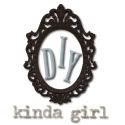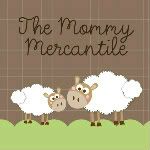So far in my clothing productions class we have practiced how to hand-sew hems, machine-sew hems, and do zippers, darts, and use the serger. When we were practicing hand stitches, I learned some things I never would have thought of:
1) Beeswax: How many of us have tried to hem pants, finish a quilt, or fixed a seam with a needle and thread, only to have the thread snap? I don't want to know how many times that has happened to me. That's where beeswax comes in. After you thread your needle, and before you tie a knot, run the thread from the eye of the needle to the end of the thread through your beeswax. If you get beeswax in a plastic container with slots, run the thread through one of the slots and use a little pressure to get it to go into the beeswax. The beeswax will fill in the tiny grooves in the thread, which not only makes it smoother, but reduces friction when the thread is moving through fabric. It also strengthens the thread so it doesn't snap so easily by stabilizing the twist ability of the thread. (Another thing I've learned: Staple fibers, or fibers that are less than 3 inches long, make a stronger yarn when they are twisted harder.)
2) Having the right pins: I never put much thought into what pins I had. To be honest, most of mine were my Mom's old ones, so they were a bit dull. There are a lot of different types of pins, including dressmakers and quilting pins. Pins come in a variety of lengths. If you are making clothes, size 16 to 20 are best. When quilting, generally the longer the better, especially when it comes to basting and tying or quilting by machine or hand. You want to get thin, sharp pins to make sure they can go through multiple layers of fabric, especially heavier fabrics like fleece or denim. Also, try to avoid pressing with pins in the fabric. The heads will most likely leave a little dent in your fabric, especially if it resists temperature like polyester does (Proper terminology: thermoplasticity). The types of heads on pins are important too. If you don't care about looks, then plain rounded heads are fine. If you want to be able to grab them easily, think twice about getting plastic head pins--they melt easily! Glass head pins are better because glass is not affected by heat from irons. A bit of caution: glass head pins can shatter if dropped.
3) Type of thread: Have you ever read the labels on thread and wondered what the words mean? Here's one word I had no idea what it meant: mercerized. This means that the thread was treated with an alkali before it was spun to improve its twist ability and strength. Sewing thread has a much higher tpi (twist per inch) than threads in a fabric because they need to be stronger because of all the pulling and friction it will undergo. A cotton-poly blend is best because polyester has higher abrasion resistance than cotton, thus it lends this ability to the cotton. Natural fiber threads like cotton can break easily.
4) Scissors vs. Shears: Do you know the difference? A good simple way of knowing is the size. Shears have longer blades. Your basic 8" sewing scissors are really shears. Scissors are smaller, like the ones we all used in elementary school. They are usually up to 6" long. Shears are used for cutting bigger items, such as quilt squares or pattern pieces with straight edges. Scissors are for cutting threads, cutting curves, trimming seam allowances, etc. A good way to remember? Big job, big blades; small job, small blades. Easy, no?
Do you have any tricks, tips, or favorite tools you've come up with while sewing? Please share!

.jpg)




1 comments:
Those are pretty good ideas! I just bought new pins because my long ones were disappearing! I need to double check about the plastic heads, but then again I never really iron anything when it's pinned. Depends on the project I guess!
Post a Comment